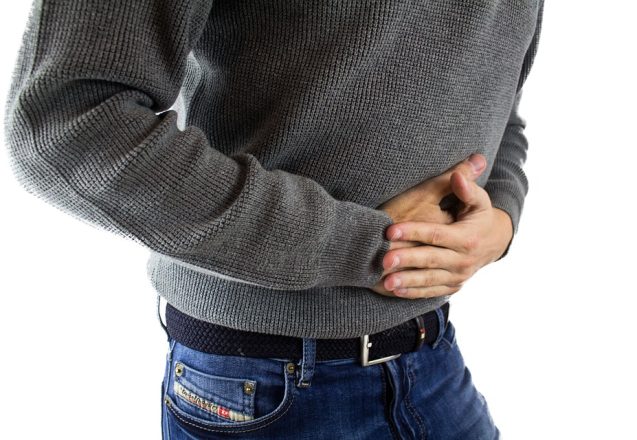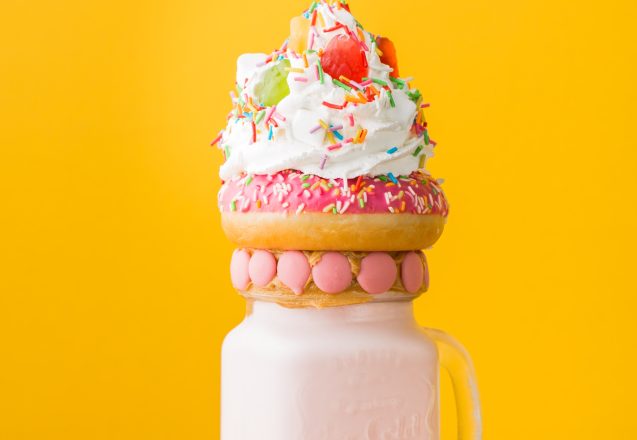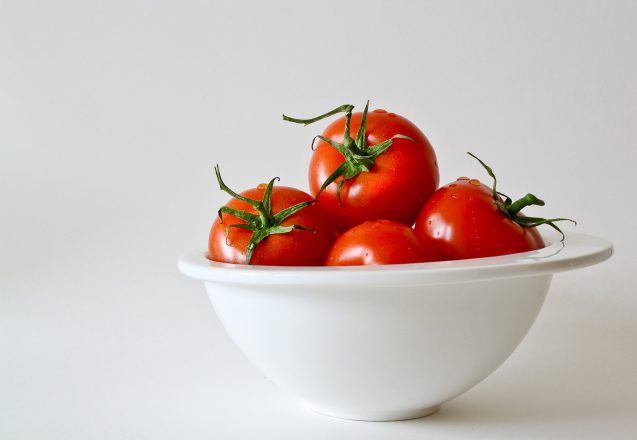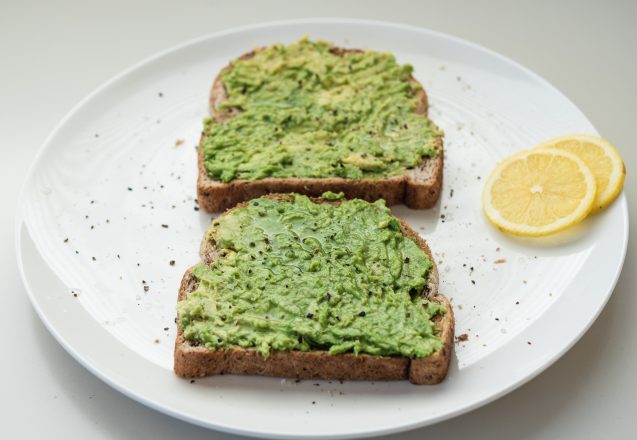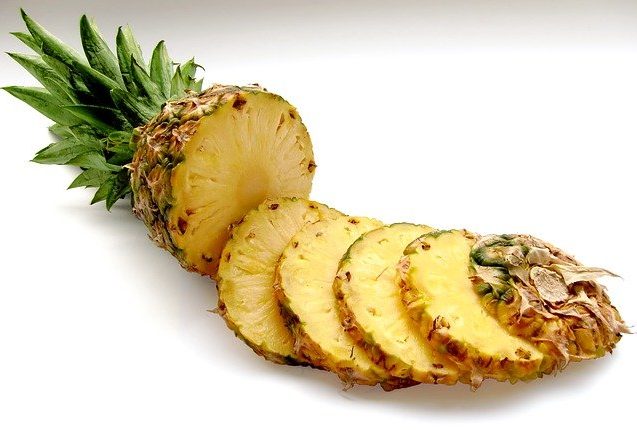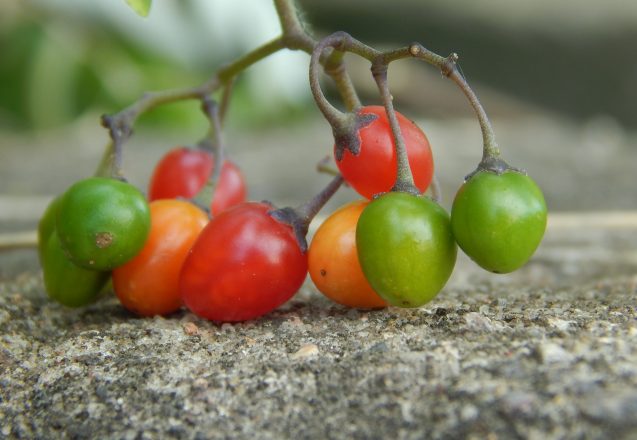How The Bacteria In Your Gut Determines Your Mood
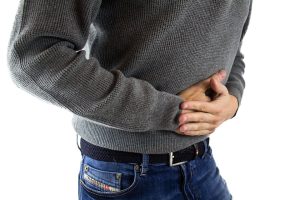 Many of the clients from Totowa, NJ, and surrounding areas understand that you need more than just exercise to lose weight and be your healthiest. You need a healthy diet, too. A healthy diet does more than just help you lose weight. It provides nutrition. What you eat also makes a difference in your gut microbiome—the type of bacteria and other microbes in gut. They affect everything from your digestion and the nutrients delivered to your body to your mood.
Many of the clients from Totowa, NJ, and surrounding areas understand that you need more than just exercise to lose weight and be your healthiest. You need a healthy diet, too. A healthy diet does more than just help you lose weight. It provides nutrition. What you eat also makes a difference in your gut microbiome—the type of bacteria and other microbes in gut. They affect everything from your digestion and the nutrients delivered to your body to your mood.
There’s a lot of microbes in your gut.
The number of microbes is only estimated and the estimations vary widely. Scientists believe there’s anywhere from 1.3 microbes to 10 microbes for every human cell in the body. Your gut has somewhere between 300 to over 1,000 different species of microbes, with some harmful and others helpful. Microbes are linked to preventing diseases, such as autism, celiac disease, heart disease, obesity, malnutrition and asthma. When you have an imbalance of microbes, it can cause mental disorders and changes in behavior. It can make you feel anxious and depressed, too.
At one time, it was thought that the emotions controlled the gut, not scientists think differently.
It’s a constant battle for control in your gut with the good bacteria trying to keep the bad bacteria that affect your health in check. Gut bacteria studies on people with mental issues, such as ADHD, OCD, Parkinson’s, Alzheimer’s, bipolar disorder and schizophrenia, show there’s an imbalance or overgrowth of some microbes and too few of others. At first, they thought the imbalance came from the mental disorder, but now believe it may be the other way around. The imbalance can cause intestinal permeability, malnutrition and inflammation, too.
The gut bacteria help to create many of the neurotransmitters.
The brain and gut are in constant contact via the vagus nerve, which connects directly to the central nervous system, connecting the lungs, heart and digestive tract. If your gut microbes are out of balance, it can cause inflammation of the gastrointestinal tract. Inflammation affects the entire body, including the brain. The gut-brain axis continues when you consider different types of bacteria which help synthesize different types of neurotransmitters, such as dopamine, GABA and serotonin, which are responsible for making you feel good or calm. The gut also helps make other brain chemicals, such as BDNF—brain-derived neurotrophic factor. It protects the brains and improves the signal strength between neurons. Scientists have found a connection between low BDNF and anxiety, depression and learning.
- Your gut synthesizes vitamins and minerals. That includes vitamins like B6, B12 and folate, which are associated with mood, nerve and brain function. Studies showed niacin was beneficial for schizophrenia and B vitamins helped depression and alcoholism.
- Factors that can damage the microbiome include high consumption of refined sugar and grains, taking antibiotics, inadequate fiber, alcohol abuse, stress, processed vegetable oils, like corn oil and canola and foods with gluten.
- Exercise can help get your gut microbes back to normal. It can increase the gut microbes that produce short chain fatty acids, which aid immunity, metabolism and create neurotransmitters that affect your mood.
- Improve your gut health and your mood by eating healthier. Choose foods higher in fiber and those without added sugar. Avoid processed food. Get plenty of sleep. Lack of sleep also affects the gut microbiome. Exercise regularly.
For more information, contact us today at Prime Fitness Studio
What’s The Difference Between Green Tea And Black Tea?
 Green tea and black tea come from the same plant, Camellia sinensis. They’re both picked at peak freshness and allowed to wither, to reduce the amount of water they contain. That’s where the process changes for green tea. While black tea withers completely, then dried naturally during fermentation, green tea only withers slightly, then they’re pan or oven dried or steamed to prevent oxidation that causes tea to darken. The darker the leaves, as in black tea, the darker the tea.
Green tea and black tea come from the same plant, Camellia sinensis. They’re both picked at peak freshness and allowed to wither, to reduce the amount of water they contain. That’s where the process changes for green tea. While black tea withers completely, then dried naturally during fermentation, green tea only withers slightly, then they’re pan or oven dried or steamed to prevent oxidation that causes tea to darken. The darker the leaves, as in black tea, the darker the tea.
Both types of tea offer similar heart healthy benefits.
Both types of tea contain polyphenols called flavonoids that offer protection for the heart. An animal study showed that it could lower the amount of plaque formation by as little as 26% for a lower amount of tea and up to 68% for a higher amount. Both black and green tea aided in lowering triglycerides and LDL and both lowered blood pressure. Drinking 1-3 cups a day can reduce the risk of heart disease. However, the reduction of heart disease was higher for those who drank green tea.
Both green and black tea can help you stay alert.
Both types of tea contain caffeine, just like coffee. You can drink either tea or coffee to get the pick-me-up, since caffeine is a stimulant that also enhances your mood. The difference between tea and coffee is that tea contains L-theanine. L-theanine crosses the blood-brain barrier to change the effects of the caffeine and relax you, but still leave you alert. It does that by causing the release of a neurotransmitter called gamma-aminobutyric—GABA. It also allows the release of serotonin and dopamine that make you feel good. While both green and black tea contain L-theanine, green tea has more.
Green tea has EGCG—epigallocatechin-3-gallate, while black tea has theaflavins.
One antioxidant that black tea doesn’t have is EGCG, but black tea has theaflavins. So, which one is better for you? The EGCG is responsible for many of the benefits offered by green tea. EGCG is thought to have cancer inhibiting properties, may reduce the effects of amyloid plaques that occur in Alzheimer’s patients, provide liver protection, are anti-microbial, aid in preventing fatigue, yet are also calming. The theaflavins in black tea protect the heart and blood vessels, while reducing the risk of plaque formation, by lowering inflammation and boosting nitric oxide. Theaflavins may aid in breaking down fat, to help control weight and fight obesity.
- Studies show that black tea provides the same antioxidant protection as those provided by the polyphenols of green tea.
- Drinking 6 cups a day of green tea can lower the risk of diabetes by as much as 33%. New studies on black tea show that it may have a similar effect.
- Your gum health is boosted by both black and green tea, since it has an antifungal, antibiotic effect that improves oral health and prevents cavities. However, black tea stains on teeth are darker than green tea stains.
- Green tea may help lower the risk of lung cancer. Both green and black tea can help improve lung function and soothe your airways.
For more information, contact us today at Prime Fitness Studio
How To Exercise With IBS
 IBS—irritable bowel syndrome affects the large intestine and has symptoms that include cramping, bloating, excessive gas, either constipation or diarrhea, abdominal pain and sometimes fecal incontinence. While the symptoms come and go, when you do have a flair up, it can be unexpected and last for hours, days, or even months. While making lifestyle changes can help, such as getting regular exercise or eating healthier, it’s not always easy. Sometimes, just going to a gym can create anxiety that brings on an attack.
IBS—irritable bowel syndrome affects the large intestine and has symptoms that include cramping, bloating, excessive gas, either constipation or diarrhea, abdominal pain and sometimes fecal incontinence. While the symptoms come and go, when you do have a flair up, it can be unexpected and last for hours, days, or even months. While making lifestyle changes can help, such as getting regular exercise or eating healthier, it’s not always easy. Sometimes, just going to a gym can create anxiety that brings on an attack.
Exercise can work both ways.
Most common triggers for IBS are in the category of food. In fact food may account for as much as 60% of the problem. Sometimes it occurs with an intolerance, such as lactose or gluten intolerance, other ties it’s a specific type of food, like spicy or sugary food. Hormonal changes, some medications, a GI infection or even emotional stress can also cause an attack. Even though exercise isn’t normally a trigger, it may be if it’s prolonged and intense. However, mild to moderate activity may actually help.
Get stress relief from exercise and maybe relief from IBS symptoms.
If stress is a trigger for IBS and exercise relieves stress, it only makes sense that in that particular case, it would be beneficial for people with IBS. In one study, it was found that people who exercised decreased the severity of their symptoms, compared to those who didn’t. Another study found that people who were less active tended to be more likely to have IBS. One of the reasons for the benefit was stress relief. Another was improved sleep, since poor sleep habits can trigger a flare-up. Exercise also helped clear the body of gas and bloating, while aiding in bowel movements that prevented constipation.
A program of mild exercise can help.
If you haven’t exercised at all, start with something simple. Make it a point to walk for ten minutes three time a day, or once a day for a half hour. Walking is low impact and can be done almost anywhere. It reduces stress and is low impact. Bicycling, swimming, low impact aerobics, bodyweight workouts and stretching can help.
- Some yoga poses are particularly good for IBS, such as the bridge, which is also a traditional bodyweight exercise. Lay on your back, knees bent and feet on the floor. Lift the hips off the floor to form a diagonal with your body. Hold, then lower.
- In the same starting position as the bridge, extend your arms out, perpendicular to the body. Bring your knees toward your chest, then lower them first to the left as you turn your head to the right. Then go in the other direction.
- Use breathing techniques to help you relax. Diaphragm breathing is one potential, so is alternate nostril breathing. Other breathing techniques that relax include inhaling deeply through the nose, holding and exhaling deeply through the mouth.
- Just get moving. If you’re sitting too long, it can also trigger attacks. Set an alarm on your phone to remind you to get up every 55 minutes and move for five minutes. Lack of movement can cause the process of food passing through the intestines to slow, creating bloating.
For more information, contact us today at Prime Fitness Studio
Exercise Can Help Reduce Risk Of Dementia
 As you get older, you often face problems not imagined by younger people, one of those is dementia. Dementia, unlike many other ailments that are more prevalent as seniors, steals more than good health, it steals memories and the past. Whether it’s Alzheimer’s or other form of dementia or senility, there’s new research to bring hope. Some of that research focuses on how exercise can improve your mental health and reduce risk of dementia.
As you get older, you often face problems not imagined by younger people, one of those is dementia. Dementia, unlike many other ailments that are more prevalent as seniors, steals more than good health, it steals memories and the past. Whether it’s Alzheimer’s or other form of dementia or senility, there’s new research to bring hope. Some of that research focuses on how exercise can improve your mental health and reduce risk of dementia.
What does exercise do to help prevent or even reverse dementia?
Exercise does so much for your body. It can help you attain a healthy weight, reducing the risk of high blood pressure, diabetes and high cholesterol that can cause cognitive thinking impairment. Excess weight can increase the risk of stroke, that also causes cognitive impairment. One study found that women between 20 and 49 who had a BMI between 25 and 29, which is classified as overweight, were almost twice as likely to develop dementia later in life than people of normal weight. If the women were considered obese, a BMI of 30 or more, the likelihood increased to 2.45 times higher.
It’s never too late to start exercising.
You don’t have to start a program of exercise when you’re younger to reap the benefits. You’ll get them whether you’re middle-aged or older. Some forms of exercise are better for protecting memory, but all types are good for the brain. Studies show that people in good condition who are fit, score best on memory tests. One study followed two groups of seniors. One started walking briskly three times a day, while the other made no change. Those that walked briskly not only improved overall health, they improved on cognitive tests, too. The same was true when studying two groups of people with the e4 gene found in Alzheimer’s. The group that didn’t exercise had major atrophy of the brain compared to those that did.
What’s the best form of exercise?
First, you need all types of exercise. Strength training and balance training are important to prevent injury and perform the daily tasks of living. Balance is also important to prevent falls. Aerobic is often the easiest type of exercise to do, since walking is an aerobic exercise. However, one study found that people who did interval walking, increasing the incline for four minutes, then followed by three minutes of gentler walking in four rounds, got the most benefit from exercise both in heart and memory benefits.
- The study that showed improvement in cognitive skills from interval walking used men and women 60 or older, showing it’s never too late to start exercising.
- If you’re going to walk, instead of doing it on a treadmill, get out in the sun to increase your vitamin D. Safe sunning and boosting vitamin D levels can help reduce the risk of dementia by 122%.
- If you’re noticing signs of cognitive decline, besides exercise and weight loss, look at your diet. A healthy diet can help reduce the risk of dementia. Sometimes medications can be the culprit, too.
- When you exercise, always make sure you hydrate adequately. Seniors dehydrate faster and even mild dehydration can produce symptoms of dementia, just as bladder infections can create mental confusion.
For more information, contact us today at Prime Fitness Studio
Best Exercises For Balance
 It’s easy to understand how getting stronger, improving flexibility and endurance can help you be fitter, but have you considered how important balance is? Balance can help older people by aiding in preventing falls, but it also helps athletes be more powerful. That’s because exercises for balance strengthens core muscles. We focus on all types of fitness at Prime Fitness in Totowa, NJ, to ensure you’re the best you can be.
It’s easy to understand how getting stronger, improving flexibility and endurance can help you be fitter, but have you considered how important balance is? Balance can help older people by aiding in preventing falls, but it also helps athletes be more powerful. That’s because exercises for balance strengthens core muscles. We focus on all types of fitness at Prime Fitness in Totowa, NJ, to ensure you’re the best you can be.
What is meant by balance and balance training?
You probably think that it’s easy to provide a definition for balance, until you try to do it. It’s remaining erect and in control of your body, but it’s more than that. There’s dynamic and static balance, too. Static balance means you can remain in a certain position with your body holding still, like standing on one leg, while dynamic balance is maintained while you’re moving, such as walking.
Exercises that build static balance are simple.
If you can stand with your feet as close together as possible and maintain an upright, tall position, holding that position for a minute, you’ve just done a static balance exercise. Next move one foot so the toe of that foot touches the arch of the other foot and hold the position for a minute. Finally, move that same foot to the back of the other foot and hold the position for a minute. The last one isn’t nearly as easy. It’s standing on one leg with the other lifted and holding for 10 seconds and building to a minute. Then reverse the foot on all exercises that remains stationary.
Dynamic balance exercises are a bit more intricate.
You may recognize calf raises to build the muscles in the calves, but they also can be good dynamic balance exercises. If you’ve ever done a squat, you’ve done another dynamic balance exercise. Leg curls, where you stand straight and lift one heel up behind you while keeping your knees close can help build balance.
- If you’ve ever done a hip extension, you’ve done a dynamic balance exercise. Just stand upright and kick one leg behind you to do it. You can even hold onto a chair for support, while you build your balance.
- Stand with one side of the body next to a chair. Place one hand on your hip and put the other hand on a chair for stability. Stand tall and shift your weight as you lift your outside leg, doing a hip abduction.
- Go ballistic for ballet. Do toe stands. Not only will going up on toe strengthen your calves and ankles, it helps your balance. You can use a chair for support or a wall. Keep your feet close together and raise your heels for a second or two, repeating 10 times.
- You’ll build your core muscles and improve your balance with wall push-ups. Just stand arm’s length from a wall. Put your hands on the wall and bend your elbows until you lean forward as you would in a regular push-up. Repeat approximately 10 to 15 times.
For more information, contact us today at Prime Fitness Studio
The Alarming Impact Of Sugars In Your Diet
 There’s nothing better than exercising regularly, unless it’s eating a healthy diet. Both play a significant role in your health. There are some general rules that can help you create a healthy diet, such as eating plenty of colorful vegetables, avoid highly processed food and most of all, avoid food with added sugar. Of all the food that has a negative impact on your health, food with added sugars is among the worst. The words “added sugars” are important, since fruits and vegetables also contain natural sugar, but also contain fiber that slows the absorption and other healthy nutrients.
There’s nothing better than exercising regularly, unless it’s eating a healthy diet. Both play a significant role in your health. There are some general rules that can help you create a healthy diet, such as eating plenty of colorful vegetables, avoid highly processed food and most of all, avoid food with added sugar. Of all the food that has a negative impact on your health, food with added sugars is among the worst. The words “added sugars” are important, since fruits and vegetables also contain natural sugar, but also contain fiber that slows the absorption and other healthy nutrients.
Eating sugar makes you want to eat more sugar.
The sugar habit is quite addictive and even worse, when you eat something filled with sugar, it makes you want to eat more. Sugar triggers the opioid receptors, which gives you a natural high and boosts your energy, spiking it. What goes up rapidly, also comes down rapidly and those spikes can create dangerous changes to your body, putting out high levels of insulin and causing insulin resistance, which can cause metabolic disease and other problems. As the spike drops, you want more sugar, because your energy level is even lower.
High amounts of sugar can cause a condition called non-alcoholic fatty tissue liver disease.
When you eat too much sugar, it causes the pancreas to work hard to produce insulin, but it also makes the liver work harder too, especially if the sugar is fructose. It creates stress on the liver, inflammation and allows fat to accumulate. It’s the primary cause of non-alcoholic fatty liver disease. One study followed the number of sugary soft drinks people consumed and found this condition occurs more frequently in people that drank more sugary soft drinks than those that didn’t.
Don’t be fooled by the word natural when it comes to sugar.
Unless you’re eating an apple that contains sugar, or other fruit or vegetable, no matter how natural the sugar is, it’s not healthy. While raw honey may have some benefits for health, it’s still sugary and eating too much isn’t healthy. HFCS is corn syrup that’s been altered in the manufacturing process and while it started out natural, it’s anything but that. Even if you ate the purest of cane sugars, they’re still not healthy. Foods containing added sugar increase your risk of diabetes, high blood pressure and heart disease. It also accelerates aging and can reduce the effectiveness of your immune system.
- Some forms of sugar, such as HFCS—high fructose corn syrup—causes leptin resistance. Leptin is a hormone that makes you feel full. It takes more and more leptin to give you the feeling of being full, so you’ll eat far more than normal.
- Too much sugar can take its toll on your smile. It encourages dental carries. It is consumed by bacteria in your mouth. The bacteria metabolize and produces an acid that eats destroys the enamel and leaving the tooth defenseless.
- Too much sugar can lead to obesity and cause visceral fat to form around the abdomen. Visceral fat is the most dangerous type of fat. It crowds the organs and can lead to high blood pressure, stroke and other diseases.
- If you want to stay younger looking, avoid food with added sugar. It combines with your body’s protein during glycation and creates a new molecule called advanced glycation end products—AGEs. They attack your skin’s collagen and elastin, causing premature aging.
For more information, contact us today at Prime Fitness Studio
The Top Superfoods For Men
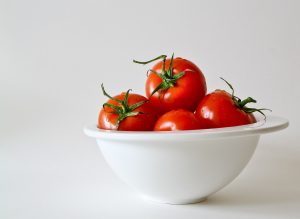 While both men and women need a healthy diet, there are some diseases that are strictly male issues, such as prostate cancer. Some issues tend to be more prevalent in men, whether it’s due to other factors, like smoking, heavier alcohol consumption, and a tendency to put off regular check-ups. There are also some nutrients that are more important for male health or missing from many of the diets of men. I’ve gotten a lot of questions from clients in Totowa, New Jersey, about the types of food that can help boost male health. Here are a few superfoods for men that should be in their diet.
While both men and women need a healthy diet, there are some diseases that are strictly male issues, such as prostate cancer. Some issues tend to be more prevalent in men, whether it’s due to other factors, like smoking, heavier alcohol consumption, and a tendency to put off regular check-ups. There are also some nutrients that are more important for male health or missing from many of the diets of men. I’ve gotten a lot of questions from clients in Totowa, New Jersey, about the types of food that can help boost male health. Here are a few superfoods for men that should be in their diet.
Load up on tomatoes, especially cooked tomatoes, to aid in preventing prostate cancer.
You may lose about 10% of the available vitamin C when you cook tomatoes, but you increase the amount of lycopene, an antioxidant that helps fight prostate cancer and other types of cancer, while also providing other benefits. Lycopene gives tomatoes a red color. It is contained in the cell walls. When tomatoes are cooked, they break the cell walls, releases these antioxidants, making it easier for the body to absorb. Other benefits from tomatoes are improved brain health, reduced risk of metabolic disease, diabetes, heart disease and cancer.
Barley and oats are the best whole grains for your diet.
Barley is loaded with vitamins and minerals, like most whole grains, but like oats, is extremely high in beta-glucan fiber. What can beta glucan do for the body? It helps lower bad blood cholesterol levels, boost the immune system and control blood sugar levels. Newer studies show beta-glucan may help protect the body when undergoing chemotherapy, radiation therapy and other exposures to radiation. Barley can help reduce blood pressure, aid in preventing diabetes. Barley also has more protein than almost all other whole grains. Barley may also help reduce belly fat and help shrink waist circumference.
Berries are loaded with nutrients and a good, sweet treat for dessert.
If you live near a You-pick area that offers berries, take the day with family or friends to get another dark berry, you can pick them yourself, ensuring they’re fresh and pay less for this superfood. Blueberries are extremely high in antioxidants and loaded with vitamins, minerals and fiber, but other berries provide many of the same benefits. Raspberries, strawberries, blackberries and cranberries are all good for your health. They are anti-inflammatories, high in antioxidants, protect the heart and boost the immune system.
- Make sure you have greens on your plate and plenty of them. Not only are they helpful in maintaining weight and have lots of fiber, but they’re also nutrient rich. Kale, for example, offers fiber, vitamin K, C, A, calcium and potassium.
- Eggs are an inexpensive source of protein, especially eggs from pastured hens. They’re high in omega-3, beta-carotene, vitamin E, D, A, B, riboflavin, and selenium.
- Beets are often named one of the superfoods. They are a rich source of magnesium, potassium and folate. They’re high in nitrates, which can lower blood pressure and improve insulin resistance.
- Fat is important to good health, but it’s important to eat healthy fat. Avocados can provide that. They contain monounsaturated fats, more potassium than a banana and can add to your protein intake.
For more information, contact us today at Prime Fitness Studio
Sugar Free Snacks You’ll Love
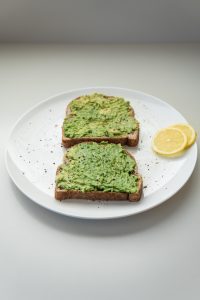 Most people immediately think of foods with artificial sweeteners when they hear the words sugar free snacks. Unfortunately, most artificial sweeteners may be just as hard on the body as sugar, even if they don’t contain extra calories. Snacks don’t have to be sweet, either. So, sugar or alternatives aren’t necessarily part of the picture. However, there are even some sweeter treats that are still healthy and use the natural sweetness of the food to add to the flavor.
Most people immediately think of foods with artificial sweeteners when they hear the words sugar free snacks. Unfortunately, most artificial sweeteners may be just as hard on the body as sugar, even if they don’t contain extra calories. Snacks don’t have to be sweet, either. So, sugar or alternatives aren’t necessarily part of the picture. However, there are even some sweeter treats that are still healthy and use the natural sweetness of the food to add to the flavor.
Consider a protein carb combo that’s also a good pre and post workout snack.
Apple slices with peanut butter is one way to satisfy your desire for something sweet that will also fill you up. You can also make up hard-boiled eggs ahead of time and make a half sandwich snack with a slice of whole grain bread, avocado and the sliced hard-boiled egg. You can also make those hard-boiled eggs into a healthy egg salad that uses Greek yogurt, Dijon mustard and herbs for the dressing. Just add chopped onion or chives, chopped celery and you’re ready to put it on a slice of whole wheat toast or make a wrap with a leaf of lettuce.
If you can chop, you can make these healthy snacks.
Unless you love cooking, spending extra time in the kitchen isn’t a top priority. Luckily, these snacks don’t require a lot of extra effort. Whether you choose fresh fruit or fresh veggies, it just takes a little time for prep. You can cut melons, pineapple and other fresh fruit into bitesize pieces, or wash berries and remove the stems and keep them ready in the refrigerator for quick snacks. Preparing broccoli, cauliflower, carrots, celery and other vegetables ahead and keeping them fresh in refrigerator bags, with a health dip available is another sugar free option that’s quick, easy and healthy.
Make a parfait from Greek yogurt.
If you have small Mason jars, the type often used for jelly, you can make these parfaits ahead and save time when you’re hungry. Layer the parfait, first with Greek yogurt, then add berries, cherries or other chopped fruit to the mix. You can then add nuts for added protein, a half a banana for creamy sweetness and/or toasted oats or seeds. When you eat it, mash the banana and fruit as you mix it with the yogurt for a delightful pudding style sugar free treat.
- Microwave popcorn should be on your list as a healthy snack. Make your own at home in a microwave safe container. You need ¼ cup of popcorn and a microwavable bowl and plate to fit on top of the bowl.
- Are you hankering for something sweet that doesn’t have added sugar or artificial sweetener, make stuffed medjool dates. You can use pecans and cream cheese to stuff them and enjoy the dates sweetness and protein from the nuts.
- Raisins and other dried fruit added to mixed nuts make a great trail mix that’s the perfect snack. Divide it into individual serving sizes and put it into small plastic bags you can grab and eat on the run.
- Make your own ice cream without a drop of sugar. Cut a banana into slices that resemble small half inch coins and freeze. When you’re ready to eat, put them in a blender until it’s smooth and you have ice cream.
For more information, contact us today at Prime Fitness Studio
Is Sugar From Fruit Bad For You?
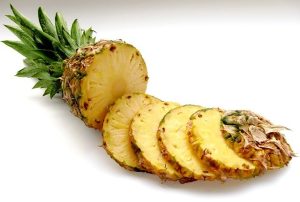 When it’s hot out, eating a slice of sweet watermelon can hydrate you, cool you and provide benefits for your body. So why is the sugar from fruit considered healthy, yet other types of sugar not healthy. Even honey, which is natural and far better than refined sugar, can negatively affect your body by increasing inflammation, is high in calories, can lead to insulin resistance, liver and heart disease.
When it’s hot out, eating a slice of sweet watermelon can hydrate you, cool you and provide benefits for your body. So why is the sugar from fruit considered healthy, yet other types of sugar not healthy. Even honey, which is natural and far better than refined sugar, can negatively affect your body by increasing inflammation, is high in calories, can lead to insulin resistance, liver and heart disease.
Fruit has more sugar than other types of food.
The sugar in fruit is a mixture of sucrose, glucose and fructose. Sucrose is part fructose and part glucose, which metabolize differently. The glucose is first digested, then absorbed where it goes to the lever, then the bloodstream. Fructose, on the other hand, goes to the liver immediately and is processed there. Natural fructose is good for you, unlike processed fructose, HFCS—high fructose corn syrup. That type of sugar has far higher amounts of fructose than you’d find in fresh fruits and vegetables, which by comparison is minimal. Those high amounts can lead to metabolic disorders. It overloads the liver, which causes the liver to turn it into fat. It’s the amount of fructose that makes the difference and that amount is minimal in fruit.
The fiber in fruit slows the absorption of sugar.
The fiber in fruit slows digestion and, in the process, makes overloading the liver less possible. Fruit contains two types of fiber, soluble and insoluble. The soluble fiber becomes a gel-like substance when mixes with water, which slows digestion. It also contains insoluble fiber, which adds bulk, also slowing digestion and preventing an overload of fructose in the liver. While lipogenesis, an overloading of fructose in the liver, can occur with food that has HFCS, it doesn’t occur with fruit.
High water content in fruit makes them more filling.
Since fruit has a high water content, you fill up faster. Therefore, you eat less and ingest less fructose. It’s one reason eating a whole fruit fills you more than eating that same fruit in dehydrated form. Again, you’ll eat less and ingest less fructose in the process. Pineapple, for instance, is 80% water, so when you remove the water, it shrinks in size. In fact, ¼ cup of dried pineapple comes from a full cup of fresh pineapple, which is far more filling. Taking out the water also reduces the water-soluble vitamins like B and C.
- Food with added sugar doesn’t require as much chewing as fruit. That means you can’t eat it as quickly. It provides chewing resistance, so you have to eat it slower and end up eating less. You can’t take big bites and swallow, like you might with sugary man made snacks.
- Not only does fruit contain fructose, it contains vitamins, phytochemicals, minerals and fiber to keep your body healthy. It can lower the risk of obesity and other serious conditions.
- The fiber in fruit doesn’t just slow digestion, it feeds beneficial microbes, helps control blood sugar levels, helps you lose weight and prevents constipation.
- Eating too much fruit isn’t good either, especially if you have a fructose intolerance. It can cause bloating and diarrhea. You should eat the whole fruit, rather than juices, to get the most benefit.
For more information, contact us today at Prime Fitness Studio
Have You Heard Of A Nightshade?
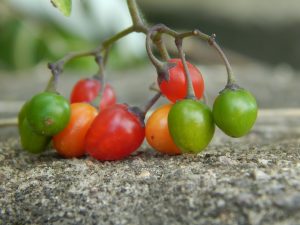 If the term nightshade makes you think of belladonna that was used as a poison for centuries. However, the nightshade family, Solanaceae, contains more than just this poisonous plant. It contains peppers, tomatoes, potatoes and eggplant, which are healthy options for most people to eat. The root of the potato is used, while the fruits of the tomato, eggplant and peppers are the bounty in those plants. Tobacco is another member of the nightshade plant, as are tomatillos, goji berries, gooseberries and garden huckleberries.
If the term nightshade makes you think of belladonna that was used as a poison for centuries. However, the nightshade family, Solanaceae, contains more than just this poisonous plant. It contains peppers, tomatoes, potatoes and eggplant, which are healthy options for most people to eat. The root of the potato is used, while the fruits of the tomato, eggplant and peppers are the bounty in those plants. Tobacco is another member of the nightshade plant, as are tomatillos, goji berries, gooseberries and garden huckleberries.
Members of the nightshade family contain solanine in the form of alkaloids.
Plants often provide their own protection from insects. Either they smell bad, taste bad or actually have natural pesticides. Not only can too much solanine kill insects, but it can also hurt people, too. Too much can cause nausea, diarrhea and digestive issues. If you’ve ever been warned not to eat green parts on potatoes, it’s because they contain more solanine. Sprouting potatoes also may have more. Otherwise, it’s hard to ingest too much solanine, especially when you consider it takes approximately 120 milligrams to make you feel sick and a whole eggplant only contains 11 milligrams.
Besides alkaloids, nightshade also contains lectins.
You may have heard of lectins in legumes and grains, but did you also know they’re in nightshades? Again, these are part of the plant’s natural defenses. In the human body, they can bind with gut cells and cause damage, while preventing absorption of nutrients. Sensitivity to lectins vary, but they can cause inflammation, toxic and resistant to digestive enzymes. Eating too much food high in lectins, like red kidney beans or whole tomatoes, can cause leaky gut, diarrhea, irritable bowel and gastrointestinal issues.
The nightshade family has benefits for your health.
Plants in the nightshade family provide antioxidants that protect cells from free radicals. Eggplant, for instance, derives its purple color from anthocyanin, a potent antioxidant that protects the body from diabetes, infection and cancer. Tomatoes have lycopene, which can reduce the risk of prostate cancer and heart disease. Members of the nightshade family are also loaded with vitamins and minerals, including vitamin A and C.
- Green tomatoes contain more solanine than ripe tomatoes. For every four cups of ripe tomatoes, there’s about 5 mg of solanine. For every four cups of harder immature green tomatoes, there’s about 500 mg of solanine. That amount is reduced when they’re cooked.
- If you have a slight sensitivity or digestive issues to the lectin in plants of the nightshade family, peel them and deseed them. It’s where most lectin is. Fermenting or pressure cooking plants also cuts the lectin.
- Nightshades can be good for you, but you might take precautions if you have an auto-immune disease or inflammatory condition, such as IBS or arthritis. To see if you have a problem, eliminate them from your diet, then reintroduce them a few weeks later.
- If you’re sensitive to alkaloids, you can do certain things to avoid them. For instance, removing the skins from potatoes removes 70% of the alkaloids. So does baking them and making sure they’re stored in the dark.
For more information, contact us today at Prime Fitness Studio
- « Previous Page
- 1
- 2
- 3
- 4
- …
- 10
- Next Page »

